
Body composition is essential for understanding the patient’s physiological makeup and guiding treatment to target specific areas for improvement in physical therapy programs. InBody devices are non-invasive and convenient, making it the ideal tool to implement into rehabilitation practices. The InBody test provides comprehensive results that can be used to educate and engage patients as well as track improvements throughout the course of physical therapy treatment.
In less than 60 seconds, the InBody Test provides easy-to-understand, accurate and objective measurements to evaluate the patient’s starting point and monitor progress during rehabilitation. Physical therapists can use the InBody to:
“The preservation of the skeletal muscle mass plays an important role in the rehabilitation of muscle and tendon damage.”
“In designing the current study, MF-BIA was selected as an inexpensive, efficient means of estimating body composition. Use of this technology allows convenience for other researchers to reproduce results and clinicians to use this office-based technology to monitor patient’s body composition as well as response to diet and exercise therapy.s.”
“As a conclusion, a 12-week rehabilitation program reduced the shoulder pain, improved the body composition and enhanced the isokinetic shoulder internal/external rotators in EG with impingement symptoms..”

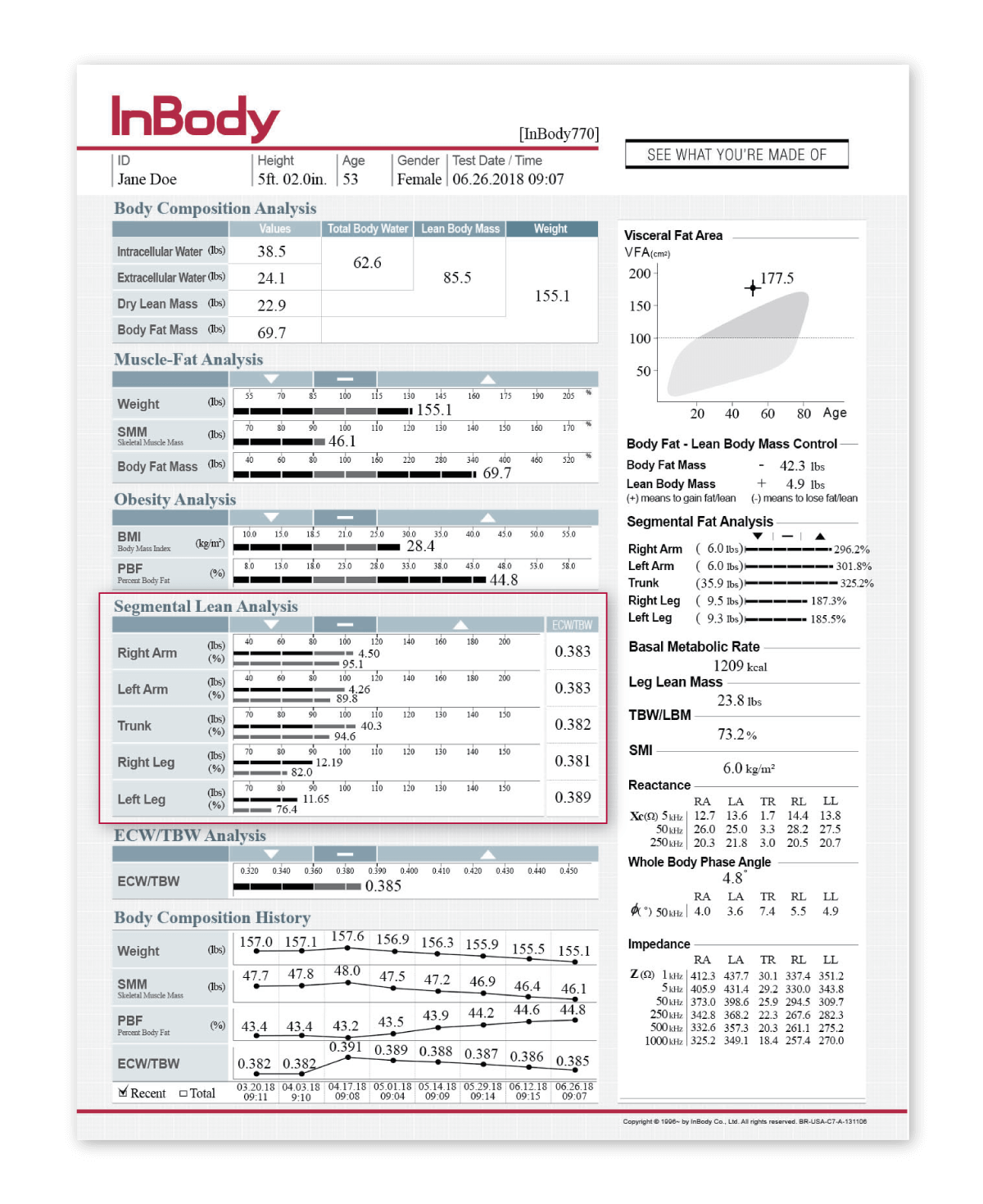

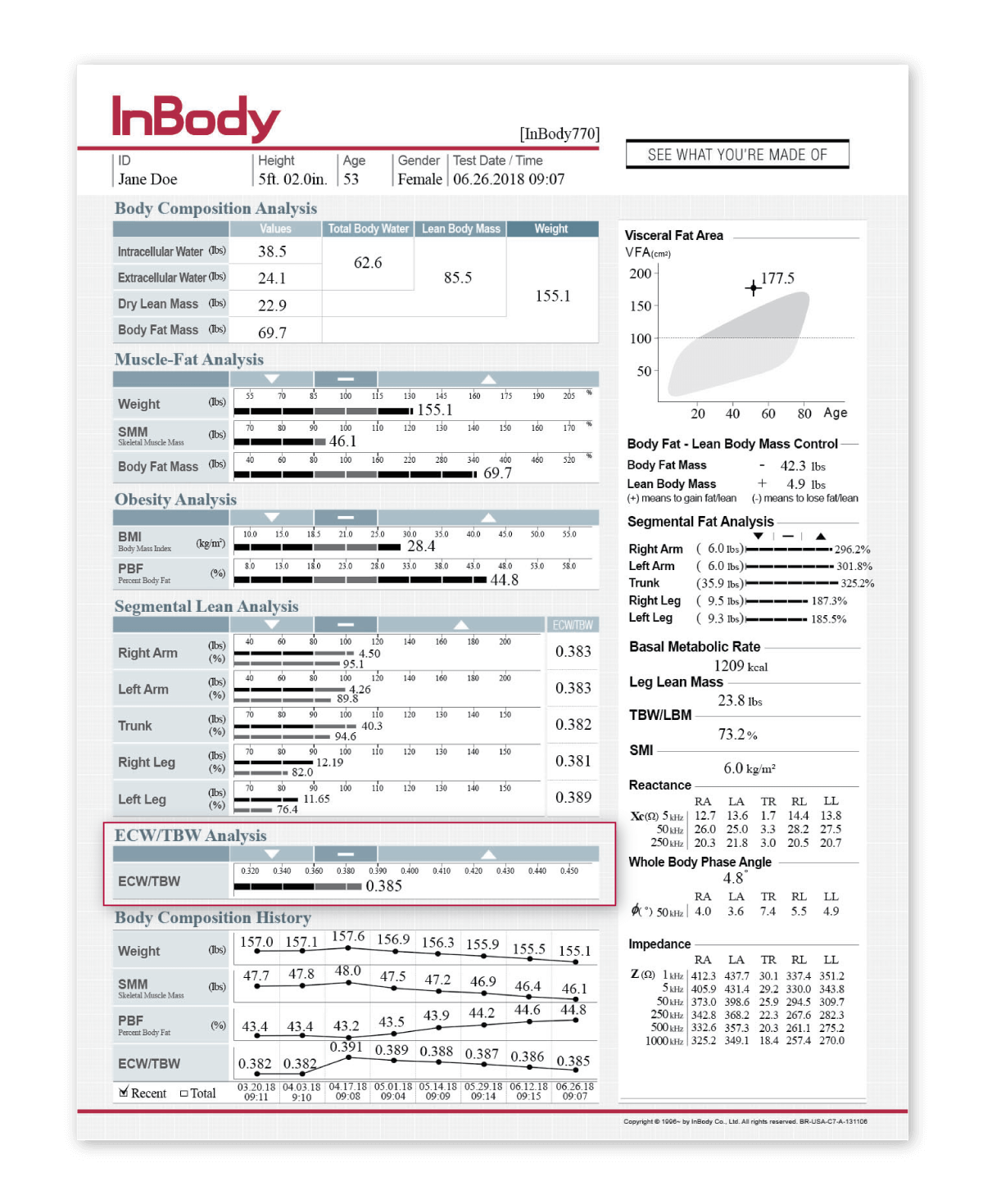

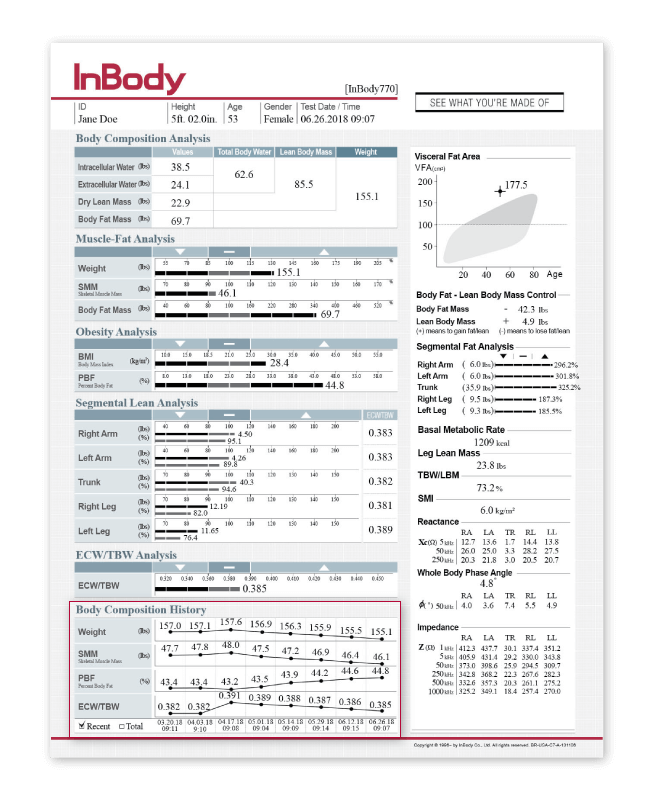

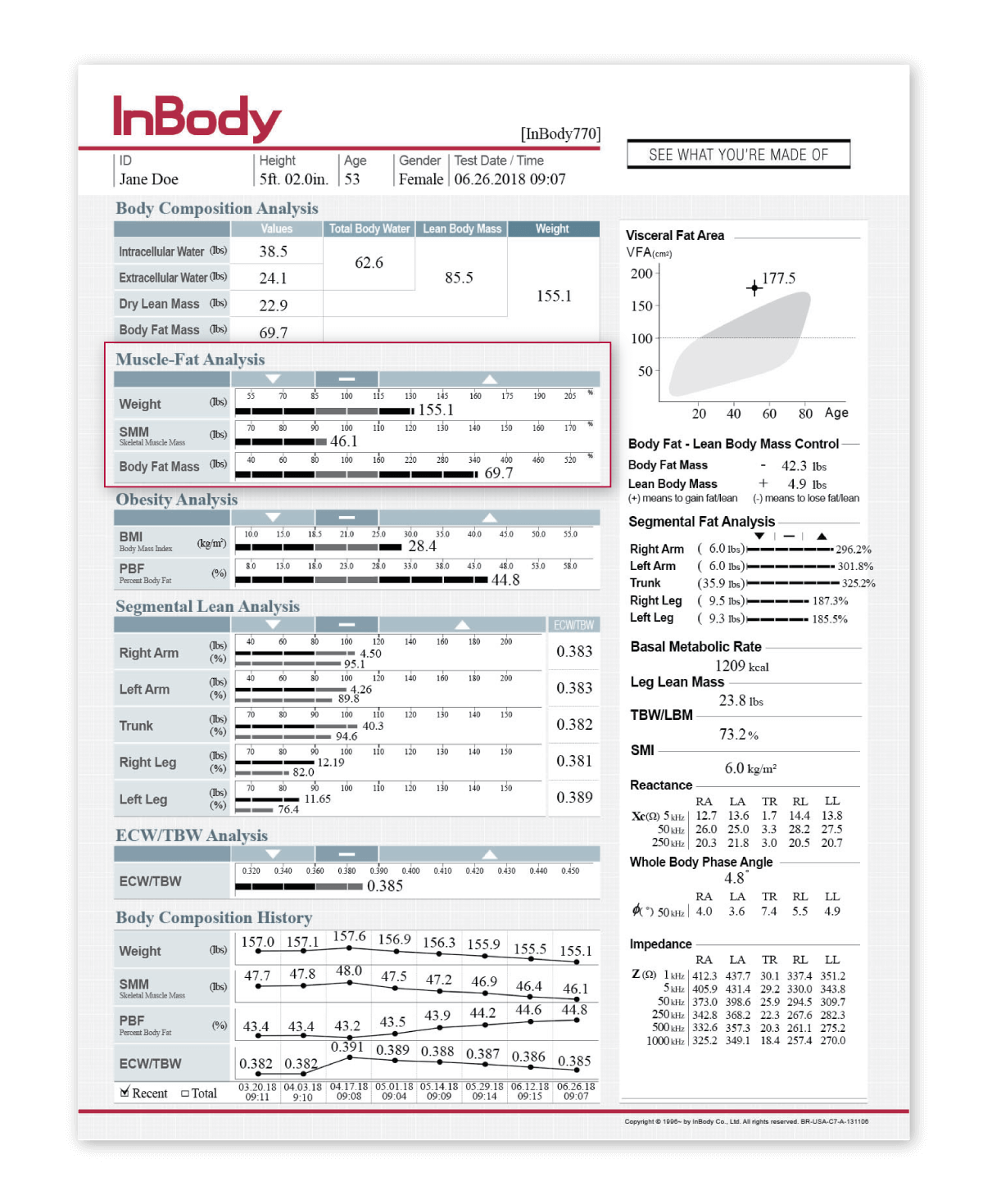

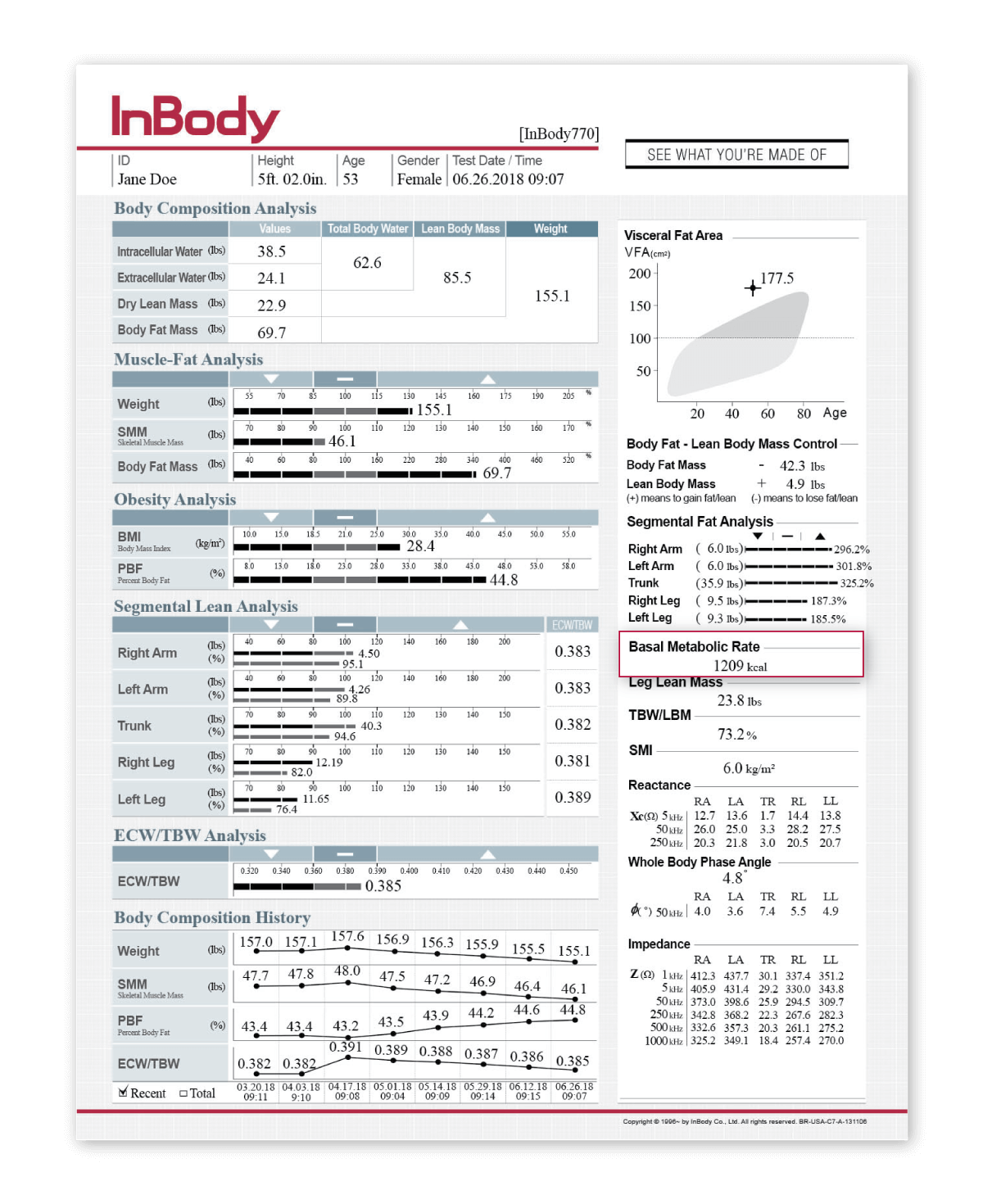

 DIRECT SEGMENTAL MEASUREMENT (DSM)
DIRECT SEGMENTAL MEASUREMENT (DSM)Direct Segmental Measurement (DSM) measures water, muscle mass and fat mass in the five body segments: right arm, left arm, right leg, left leg and trunk. By measuring each segment of the body separately, InBody provides an in-depth analysis of the patient’s muscle-fat and fluid balance in each segment independently. Identifying the patient’s lean and fat distribution allows a better assessment of associated health risks while segmental ECW/TBW can be used to identify systemic or localized inflammation resulting from injury, underlying health conditions or surgical complications.
 MULTIPLE FREQUENCIES
MULTIPLE FREQUENCIESInBody devices utilize multiple frequencies to measure body water more accurately than commonly-used methods such as weight changes or pitting edema scores. These high and low frequencies measure both intracellular and extracellular water, producing precise measures of each body water compartment. With accurate fluid measures, InBody can be used to identify fluid imbalances or water retention stemming from inflammation or injury as well as monitor changes resulting from exercise interventions and recovery.
 8 POINT TACTILE ELECTRODES
8 POINT TACTILE ELECTRODESInBody uses an 8-Point Tactile Electrode system to ensure that measurements always start in the same place, test after test. This technology creates precise and reproducible results, ensuring that the results obtained are a direct outcome of clinical recommendations and interventions, rather than error.
 NO EMPIRICAL ESTIMATIONS
NO EMPIRICAL ESTIMATIONSInBody does not rely on empirical estimations based on age, gender or ethnicity to predict results. With the high level of accuracy and precision achieved with the aforementioned technological advancements, InBody removes population-associated assumptions when determining body composition to ensure results are based solely on the individual, increasing sensitivity to the individual’s unique makeup of muscle and fat, enabling effective tracking of changes.

